Osteochondrosis should be taken seriously. Only strangers think this is an easy disease that is easy to control without the help of a specialist. For effective treatment, you should approach the problem as a whole. Excludes large loads, leading measured lifestyle, eating properly and doing special exercises. In the acute phase, drug support and ongoing supervision of doctors will be needed.
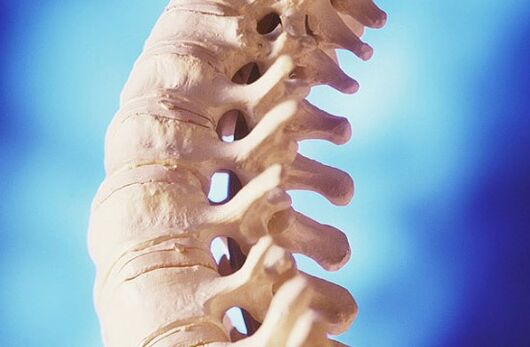
Osteochondrosis - what is it?
Distropic processes leading to partial or complete changes in the intervertebral disc. Vertebrae, contracts, destroying discs that, under the influence of loads, infections, malnutrition, loss of elasticity. Cleaning, the disc begins to destroy the nerve endings, which causes unbearable pain. Early disease does not cause serious problems, but the sooner the patient turns to the specialist, the more effective the treatment is.
At the beginning of the disease, small changes in the spine occur. An osteochondrosis approach unknowingly. Small pain appears in different parts of the spine marking the degenerative-dystrophic process in the disc.
If you do not immediately start treatment, the process may be irreversible and transferred to the vertebral tissue. Discs displacement lead to a gradual weakness of the external fibrous ring. Patients with osteochondrosis often face complications such as protrusion and vertebral hernia.
Regular studies conducted in this area provide frustrating statistical data. People over thirty -year -olds often have spinal disease, 70% of patients experience various forms of osteochondrosis. This is a neurological disease that affects the ligaments of the intervertebral compound. It is accompanied by sharp pain, a leap of stress and other symptoms that often does not allow people to lead a normal lifestyle and work normally.
Osteochondrosis does not occur for no reason, sharply, with acute pain. The first symptoms are not important and do not make sense. With unexpected deterioration in well -being, the unpleasant sensation of the spine quickly passes, do not ignore the body signal. It is required to consult your doctor immediately for advice and have a full examination. Timely treatment will help prevent serious complications.
Important. Ignoring your doctor's treatment and tips, you can face the prominence or parting part of the disc - the hernia, in which part of the pulp nucleus hangs in the cerebrospinal canal and can cause paralysis, the final nerve violation expressed in the unbearable pain.
There are several types of osteochondrosis, named after localization and position of pain in the spine.
- Cervical
- Thoracic
- Lumbar.
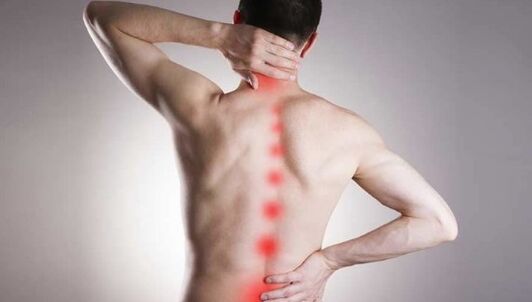
At the examination, the specialist will determine the level of the lesion, the place of exposure and select complex treatment methods. The effectiveness of osteochondrosis treatment depends largely on accurate compliance from all prescriptions of the attending physician.
Cause
After many studies, experts conclude that the main cause of osteochondrosis appearance is an uneven distribution of loads in the different parts of the spinal column. Because the root may work intensively in an unusual condition, sit long in one position, heavy load during sports training, and shot. The result of an unexpected or prolonged load on a particular area of the spine is a gradual change in the intervertebral disc structure.
Some of the main causes of the appearance and development of the disease are gradually, some of the basics can be distinguished:
- Descent changes in the development of the body leading to the appearance of osteochondrosis.
- Endocrine system disease, failure in metabolic process work.
- Improper development of the skeletal muscle system leading to pathological changes in the body.
- Any back injury, lower back, fall neck, exercise, sharp load, strike.
- Cheap lifestyle, weighed by food deficiency.
- Osteochondrosis is a unchanged satellite from overweight people suffering from obesity.
- Alcohol and nicotine abuse should lead to the destruction of intervertebral discs.
- Persistent psychological and physical understanding, stress and hard work are the leading causes of intervertebral cartilage dysfunction.
- Women at different levels of pregnancy often find manifestations of osteochondrosis.
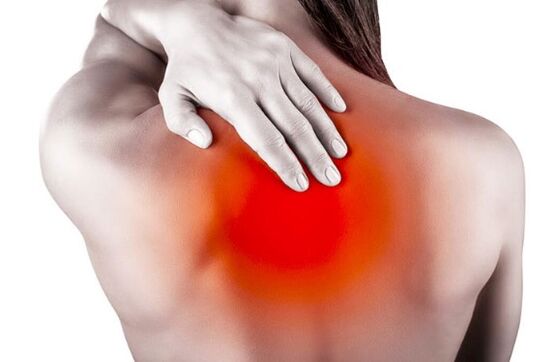
The spinal corset that supports the spine is more durable by strong -half representatives. Women with beautiful large breasts and playing small sports will surely clash with cervical and thoracic area osteochondrosis.
The development of osteochondrosis
No disease occurs for no reason and starts immediately. The body always goes through the change in step. The disease has four main stages you need to know to consult your doctor for help.
- Gradually starting a dystrophic change in the intervertebral cartilage nucleus is usually invisible. Disc dehydration is the root cause of microculars, loss of elasticity and cartilage thickening. Often, people at this stage feel a little discomfort by sitting in one pose or with intensive charging.
- The second stage is difficult to observe. Degenerative changes in tissues lead to the appearance of highlights. The fibrous capsule is destroyed, and the spinal cord is reduced. The result will pinch the nerve endings, the appearance of sharp pain in the individual part. Pain syndrome is actively expressed for any tendency, sharp turn and walking. Osteochondrosis is accompanied by a sharp loss of performance and the appearance of weakness in the body.
- Complete or partial softness against intervertebral cartilage placed due to osteochondrosis. Tissue thinning is very significant during radiography. Symptoms of the disease are mentioned and can cause partial paralysis. It is not possible to relieve pain, and you should use other injections and medicines on the fireplace. Only strong remedies and complete peace assistance.
- This is the last stage, the complete destruction of intervertebral cartilage. Complex violations of the neurological system leading to the emergence of bone growth in the cartilage. Joint mobility is completely interrupted. Osteophytes can injure the nerve endings of the vertebral and bone segments. At this stage for treatment, the help of the surgeon may be needed.
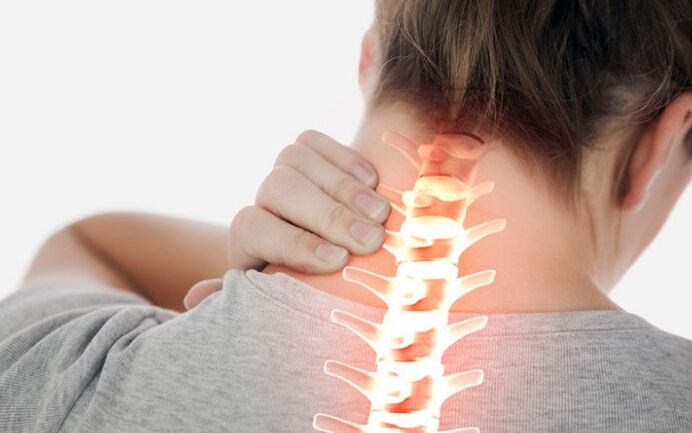
Symptoms of osteochondrosis
Osteochondrosis is a pathological change in cartilage tissue that connects the spine. Dystrophic degenerative changes occur for a variety of reasons and lead to the formation of ligaments and intervertebral discs. During osteochondrosis, soft tissue and nerve endings are violated. The vessels and the ending of the nerves, which are near the fireplace, undergo serious changes, which cause severe pain and infringement of nutrients.
The main symptoms discuss the development of osteochondrosis
It should be aware of any, despite the unimportant changes in the body. The sooner the steps -the prevention of the influence on the focus of the disease, the more effective treatment.
- There is pain in the neck, chest, back and ribs.
- There are stiffness of movement during turns, tendencies and fast walking, walking. When lifting weights, short pain appears.
- Hands and feet lose their sensitivity, go to numbness and swell.
- Chills appear even at high temperatures on the road. Lomota at the bottom and upper part.
- Unexpected and very painful spasms of the leg and arm muscles.
- Significant dysfunction in the work of the genitals arises, which can cause serious psychological injury.
- The appearance of dizziness and sharp headaches.
- Sharp pain in the chest area, reminiscent of a heart attack.
- The tip of the finger is part or completely or completely sensitive.
- Safe muscle hypotension.
- Significant decrease in performance, high fatigue, loss of visual acuity.
Symptoms of the developmental characteristics of the disease in different parts of the spine;
Cervical. Sharp pain, quick shoulders and arms, nausea, dizziness and sharp migraine attacks can indicate the disease. Unexplained pressure spike that is not related to the operation of the cardiovascular system.
The appearance of continuous noise in the ear, stars in front of his eyes talked about cervical spine problems. Older people suddenly lose consciousness while walking.
Thoracic. The appearance of sharp pain in the front of the chest, stomach, between ribs. Breathing becomes more frequent and difficult. Heavy pressure in the chest area. Sharp pain in the shoulder blade during turn, movement and tendency. Disruption of the gastrointestinal tract. Pancreatitis attacks, swelling, diarrhea. The limbs are unexpected and the public can lose balance while walking. Damage to sharp weakness, shaking feelings under the skin appear.
Lumbar. The appearance of the pain in the lower back. He can give his feet, causing loss of balance while moving. There is an unpleasant tingling on the lower leg even during rest. When it comes to leaning, it becomes difficult to straighten without outside help. Violation in the work of the genitourinary system.
The possibility of complications

The destruction of partial or complete intervertebral relationships leads to the development of various chronic diseases. Even a bit of pain in the spine, unexpectedly appearing and also disappearing quickly, should make someone undergo a complete examination. This will help identify the original focus of the disease and with the help of preventive ways to prevent further disease development.
Ignoring the first signal, you can have a more serious problem:
- The appearance of sharp pain, prolonged head, migraine and dizziness.
- Problems in the cervical spine can cause sharp vision loss.
- Often hearing loss is the result of the upper spinal violation.
- The development of osteochondrosis can cause autonomic dysfunction.
- Problems in the lower back lead to the increased disease of sharp genitourinary systems.
- Large burden and lack of systemic treatment are the cause of intervertebral hernia.
- People face diseases such as lumbago, spondylarthrosis, lumbargia.
- The development of long osteochondrosis without qualified treatment leads to stenosis of the vertebral tract.
It is necessary to clearly understand that any disruption in spinal function should lead to the development of more complex chronic diseases from the internal organs. Damage to the vascular fried beam complicates the rhythm of the organ, violates the supply of nutritional needs and removal of toxins and toxins.
This has a negative effect on the whole body. Damaged cells and toxins accumulated in the tissue stimulate the development of malignant formation. You suddenly know that excellent health has suffered serious damage from the slightest pain in the lower back, back or neck.
The severity of osteochondrosis
People find sharp deterioration in their health in the spring at the bottom of the spine. This may be due to the lack of minerals and vitamins needed. Sharp physical loads and changes in temperature on the road. In winter, the Thoracic region suffers mostly. Due to infectious diseases, hypothermia and irrational nutrition. In the cervical department, a lifestyle is inactive or working in one position that is most sitting. At the first symptom, you should use ointment, try to get rid of cramps and edema as soon as possible. An immediate appeal to a specialist will help to effectively overcome osteochondrosis. When using strong edema, using diuretics, remember to take drugs containing potassium and calcium.
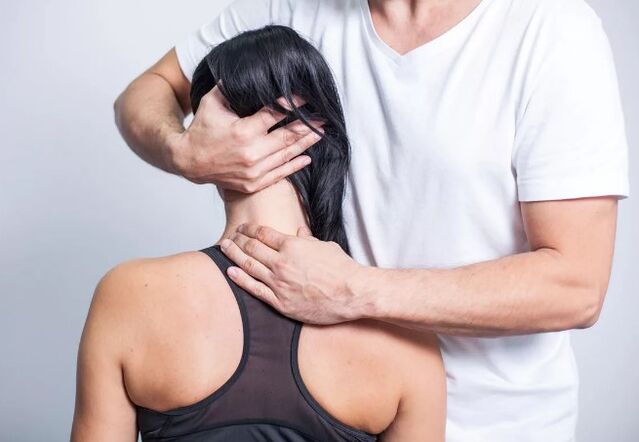
Diagnostics
A doctor dealt with a patient with a sharp pain in the spine should take several steps in sequential
- Hang -up collection. Run a detailed conversation with the patient. The goal is to explain the root cause of the occurrence of the disease. At what time the most attractive attacks arise, which involves the occurrence of pain. The individual characteristics of the disease "osteochondrosis".
- A comprehensive personal exam by a specialist. Skin examination is performed for the presence of rash and edema. Flexibility of joints and severity of reflexes are examined. Palpation of painful areas will help localize the pain and find hatred. Percussion with a finger or special tool helps determine the irradiation of pain. With the needle tingling, the level of sensitivity in the different parts of the body is determined.
To get the most complete picture of the body's condition and to identify the hidden focus, the hardware inspection should be used, which should include:
- Diagnosis uses X -Ray. Pictures of the affected area allow you to immediately see the narrowing of the allowed gap between spinous vertebrae. The drying of the intervertebral disc is clearly visible in the X -Ray.
- MRI, a modern technology that guarantees accurate diagnosis of the spinal cord disease. The use of magnetic resonance tomography helps to determine and localize the formation of intervertebral hernia.
- Tomography calculated in its interests and its effectiveness is not very different from MRI. One of the disadvantages is the increased radiation load, so CT is not recommended to use children.

























